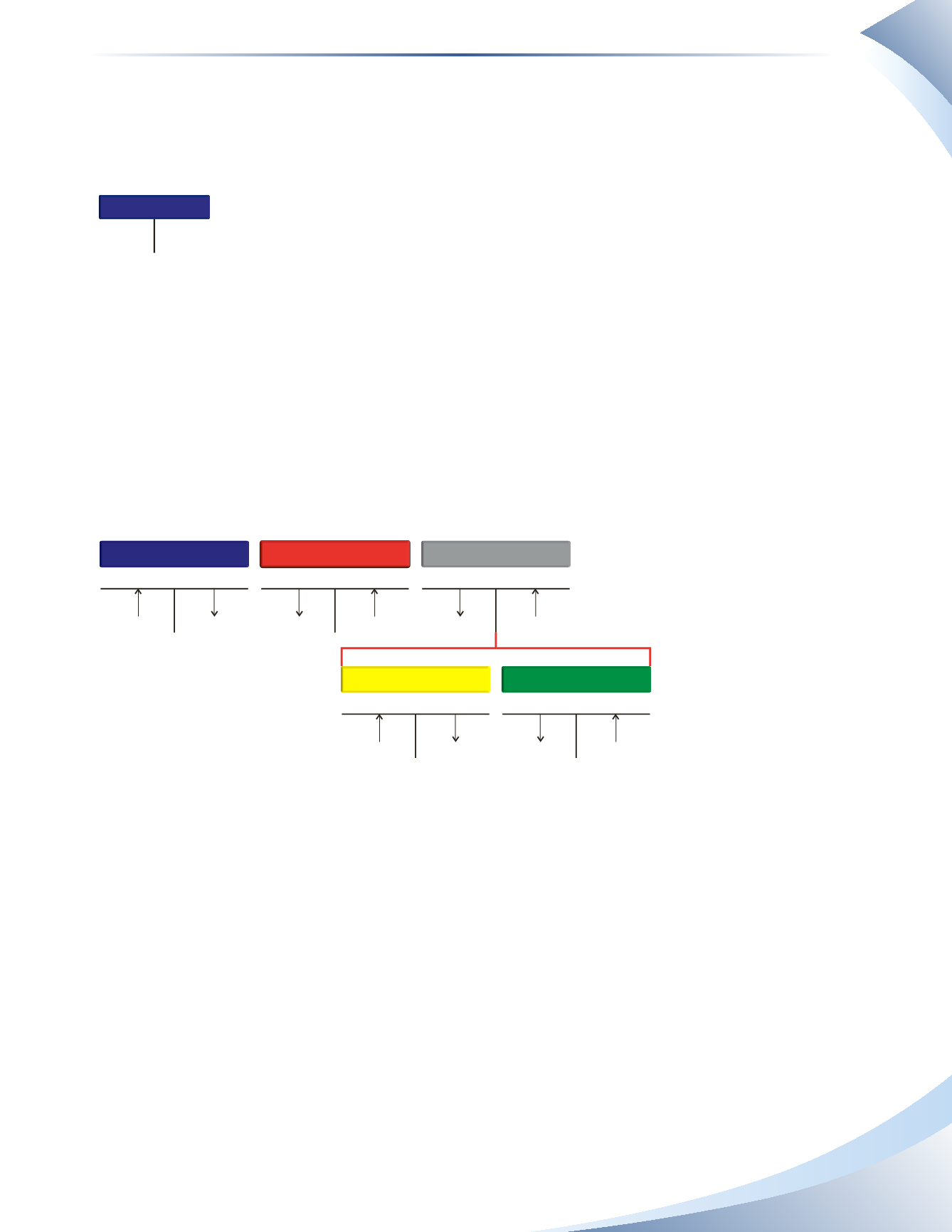
Chapter 1
Financial Statements: Personal Accounting
9
Introduction to T-Accounts
To help record transactions, and to help keep the accounting equation balanced, we will use
T-accounts. The
T-account
gets its name from the way it looks, just like a capital T. An
account
allows us to track detailed information about the values of individual items such as
cash and unpaid accounts. Every item will have its own T-account. Increases and
decreases to each account are recorded here: increases on one side and decreases
on the other. The category of the account (asset, liability, net worth, revenue or
expense) will determine which side of the T-account is the increase and which
side is the decrease.
As you complete one accounting period and start the next, the ending balance of the assets, liabili-
ties and net worth will carry forward and become the opening balances of the new period.Normally
these opening balances will show up on the increase side of the appropriate T-account.
Figure 1.16 shows how the T-accounts behave in each category.The following diagram can be used
to help memorize which side is an increase and which side is a decrease for T-accounts.
ASSETS
LIABILITIES
NETWORTH
Increase
Increase
Increase
Assets
=
+
Liabilities
Net Worth
Decrease Decrease
Decrease
EXPENSES
REVENUE
Increase
Increase
Decrease Decrease
______________
FIGURE 1.16
All assets, such as cash, use the left side of the T-account for increases and the right side for
decreases. You can remember this by referring to the accounting equation. Assets are on the left of
the accounting equation and assets use the left side of the T-account for increases.
All liabilities, such as unpaid accounts, use the right side of the T-account for increases and the left
side for decreases. Again, refer to the accounting equation. Liabilities are on the right side of the
accounting equation and liabilities use the right side of the T-account for increases.
Net worth also uses the right side of the T-account for increases and the left side for decreases since
it is also on the right side of the accounting equation.
CASH
Sample T-account
______________
FIGURE 1.15


